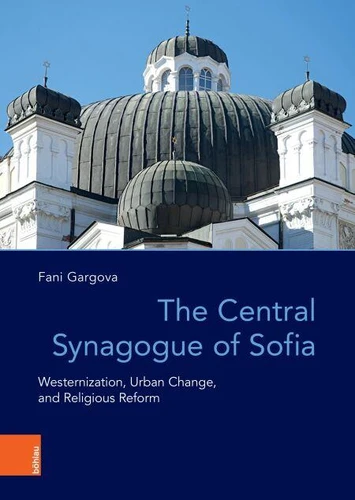The Central Synagogue of Sofia. Westernization, Urban Change, and Religious Reform
Par : , ,Formats :
Disponible dans votre compte client Decitre ou Furet du Nord dès validation de votre commande. Le format PDF est :
- Compatible avec une lecture sur My Vivlio (smartphone, tablette, ordinateur)
- Compatible avec une lecture sur liseuses Vivlio
- Pour les liseuses autres que Vivlio, vous devez utiliser le logiciel Adobe Digital Edition. Non compatible avec la lecture sur les liseuses Kindle, Remarkable et Sony
 , qui est-ce ?
, qui est-ce ?Notre partenaire de plateforme de lecture numérique où vous retrouverez l'ensemble de vos ebooks gratuitement
Pour en savoir plus sur nos ebooks, consultez notre aide en ligne ici
- Nombre de pages438
- FormatPDF
- ISBN978-3-412-52562-0
- EAN9783412525620
- Date de parution18/11/2024
- Protection num.pas de protection
- Taille12 Mo
- Infos supplémentairespdf
- ÉditeurBöhlau
Résumé
The Central Synagogue of Sofia was built between 1905 and 1909 as a highly visible and monumental structure in the social, commercial, and religious center of the Bulgarian capital. Having survived the Second World War, it remains a testament to early 20th century Sofia and its majority Sephardic Jewish community. In its architecture, it reflects the city's search for its own modern, European, and national identity, whilst attesting to the struggle of the Sofia Jewish community headed by its chief rabbi Marcus Ehrenpreis to claim its place within the nation building project.
In this first in-depth study of the building, Fani Gargova illuminates the history of the Central Synagogue of Sofia and the motivations behind its construction by positioning its appearance and architecture vis-à-vis Central European Reform synagogues and the emerging Bulgarian national style.
By looking at the building through the lens of urban planning, building material and technique, liturgy, as well as musical performance, this book significantly expands the common notion of synagogue architecture.
By looking at the building through the lens of urban planning, building material and technique, liturgy, as well as musical performance, this book significantly expands the common notion of synagogue architecture.
The Central Synagogue of Sofia was built between 1905 and 1909 as a highly visible and monumental structure in the social, commercial, and religious center of the Bulgarian capital. Having survived the Second World War, it remains a testament to early 20th century Sofia and its majority Sephardic Jewish community. In its architecture, it reflects the city's search for its own modern, European, and national identity, whilst attesting to the struggle of the Sofia Jewish community headed by its chief rabbi Marcus Ehrenpreis to claim its place within the nation building project.
In this first in-depth study of the building, Fani Gargova illuminates the history of the Central Synagogue of Sofia and the motivations behind its construction by positioning its appearance and architecture vis-à-vis Central European Reform synagogues and the emerging Bulgarian national style.
By looking at the building through the lens of urban planning, building material and technique, liturgy, as well as musical performance, this book significantly expands the common notion of synagogue architecture.
By looking at the building through the lens of urban planning, building material and technique, liturgy, as well as musical performance, this book significantly expands the common notion of synagogue architecture.




